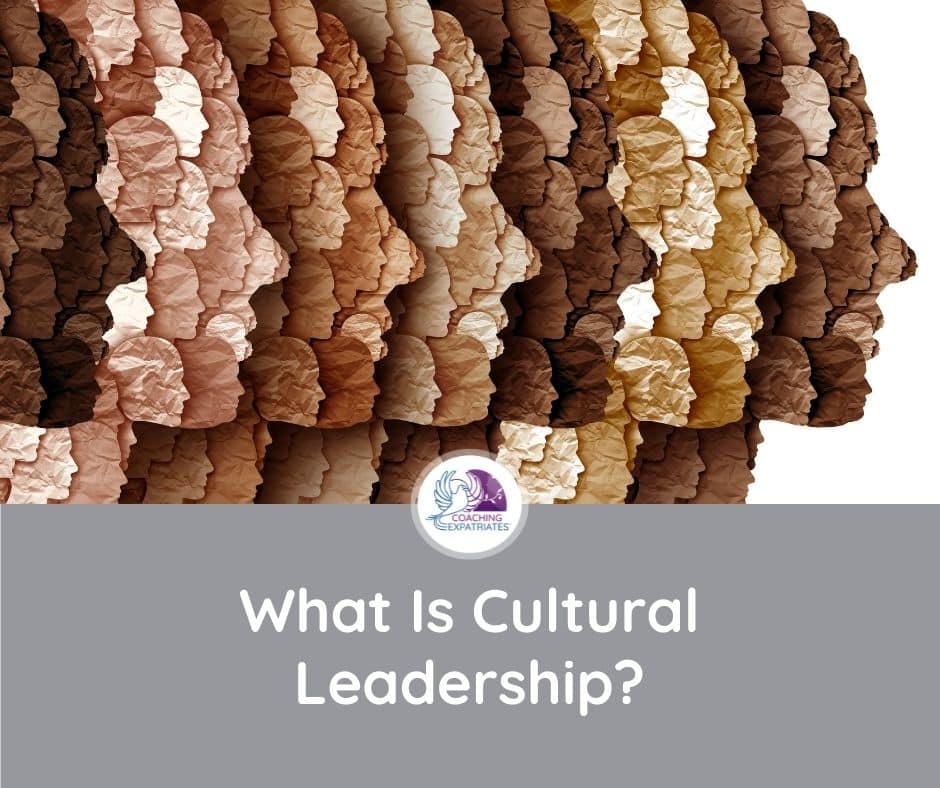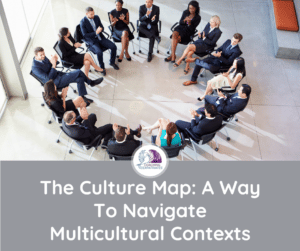We quickly know when we are in a workplace where Cultural Leadership is weak. We have that tingling sensation that we should be on our toes, ready and alert for any nasty surprises that may happen at any time! But what about strong and worthy Cultural Leadership? What is it made up of? What’s it like?
This article will go over the main aspects of Cultural Leadership, its importance, and which skills you should seek to improve it in your organization and as an individual contributor.

What Is Cultural Leadership?
Cultural Leadership is the ability to drive culture and values to influence stakeholders and communities to create a positive, inclusive, and engaging working environment. In other words, Cultural Leadership leads behaviour. The right behavioral patterns for a business to grow, prosper and be a positive, happy working environment.
For anyone to achieve this, they have to work on several key competencies and skills. Cultural Leadership is one of The 4 Success Pillars In Global Leadership, and is part of a new global mindset for leading international businesses.

Why Is Cultural Leadership Important?
In the past, the leadership community and educators thought of Leadership as mostly leading people. In due time, researchers found out that organizations become like living beings, with their own culture, needs, power and influence. The organization’s behaviors and beliefs create the organizational culture, which needs to be properly led to become inspiring, engaging, and healthy.
To drive positive behavior, strong cultural leadership understanding and skills are needed. Researchers found that leaders who create a safe, positive, and happy working environment create increased profits and performance in their companies.
More and more, vanguard leaders in the market now know that traditional Leadership does not cut it anymore if you want to succeed in such an ambiguous and uncertain world. Working on all 4 Pillars Of Global Leadership and gaining cultural leadership skills became vital.
Here are 5 key things that make Cultural Leadership so important:
Increases Employee Engagement And Productivity.
Which manager does not want a team that is highly engaged and productive? What does it take to have a team like that? If I told you that a safe, happy and positive work environment has become more important for employees’ satisfaction than many other drivers, would you believe me? Well, start believing.
Studies show that work environments that are positive and happy have more engaged and productive employees. They feel more satisfied and willing to go the extra mile. And it makes sense, right? Happier employees have greater energy and inspiration to work and create.
Fosters A Healthy And Less Stressful Work Environment.
Strong Cultural Leadership leads behavior in such a way that naturally creates a healthy and less stressful work environment. People feel safe, heard, and that they matter when cultural Leadership exists. And they can feel they belong. Everyone wants to belong. But you only want to belong to things that are worthy and make you feel safe and happy. Cultural Leadership is key because it is able to create worthy values and organizational drivers that create this safe and happy place for all.
Improves Company’s Bottom Line.
No company survives long enough if it does not make a profit. Whether an organization is for-profit or non-profit, they have to make money to survive. There is no way around it. Companies with leaders with cultural leadership skills have been shown to manage their bottom lines more effectively because they have a better and less stressful working environment. Also, because good Cultural Leadership also creates an engaging and productive workplace, it frequently reflects more profits.
Boosts Creativity and Innovation.
Well, it’s easy to understand why Cultural Leadership also boosts creativity and innovation when you see the other effects it has. If you have highly engaged and productive employees that are happy and feel they belong, as well as an organization that is making money, how can you not be motivated enough to be creative and drive innovation, right? That’s right; one thing leads to another, and it’s a chain reaction.
Develops Strong Reputation.
The last link in this chain is reputation. It’s easier to boost reputation and have better public relations when you have hyped employees, profits from innovative sources, and a positive working environment. If you’re on the spot, it’s because you are doing something good, not the opposite. Well, that helps a lot in business!
Cultural Leadership Examples In The Real World
I want to share 3 personal examples to illustrate how powerful Cultural Leadership can be.

Hubspot
As an entrepreneur, I first bumped into Hubspot when I wanted to include my company in their Market Directory. I was surprised to learn that I could only do so if I went through a certification program. At first, I thought of it as a nuisance. But while getting the training done, I became more and more WOW’ed by this company. They shared a PowerPoint with their cultural drivers and values at some point. I was simply amazed by their pitch. That pitch was part of the onboarding training for their employees. As a service provider, I knew that what they preached was what they really practiced because they were offering kick-ass training for free for me to become a supplier. Why? Because this was part of one of their cultural drivers: having exceptional professionals, no matter if internal or external, that would wow their customers. And they are willing to go the extra mile for that. After going through their training process, do you think I see the training as a nuisance today? Of course not! Since it’s free and so helpful, I actually recommend it to a bunch of people! The so desired word-of-mouth! This is the power of Cultural Leadership in a business reputation!

GE
One of the hallmarks of GE’s Spirit & Letter is integrity. Well, you might think this is Corporate burp, but if you work as a finance person in a country with high corruption index, you will see that a company that supports you as an employee against every and all corruption, even at the cost of losing deals or losing money, that’s amazing. I can tell you firsthand how confident I was, as a professional, to work for a company where I could confidently say “no” to any and all bribes, knowing no repercussions or retaliation would occur in my career or personal well-being. This is the power of Cultural Leadership for a safer working environment.

Bayer
Bayer is known for caring for its employees. Employees are not just a number. Again, you might think this is just internal marketing to look good. We know who are the real deals, thought, when they are put to the test. When New Jersey had crazy floodings in 2021, in the middle of the pandemic, Bayer employees that were affected received a text message a few hours after the event requesting check-in so that the company could help them and learn that they were well and alive. As expatriates, my husband and I were quite touched to receive a text like this. It sounded almost like a parent wanting to know if all was good. Expatriates don’t have parents nearby or family and friends. We rely on other people, mostly strangers. Knowing that the company cares for our well-being makes us feel safer and cared for. This is the power of Cultural Leadership in creating a place where employees feel they belong.
Each company has its hallmark and the set of values that they want to focus on. It’s impossible to focus on too many cultural aspects at once. Try to notice what is your company’s hallmark. What do they want to be known for?
What Are The Core Cultural Leadership Skills?
Here are the 5 key elements that each leader has to learn and improve to exercise good Cultural Leadership:
1 - Unconscious Bias.
Unconscious Bias is a bias that you might have towards something or someone without fully being aware of it. You might have a bias toward black people. Toward white people. Asian. Immigrants. Tall people. Little people.
You might not know it consciously. However, your body knows it, and you will send signals showing this. And… people will catch it. And they will feel hurt.
Unconscious Bias is not only race-related. It can be a bias towards anything. In favor or against.
In my humble opinion, knowing your personal Unconscious Biases and working on biases will become the single most important differentiator in new global leaders going forward.
In order to create an inclusive environment, leaders cannot simply be “politically correct.” They have to BE inclusive. And you cannot be inclusive if you have biases holding you back. Learning what they are and working on them is crucial.
2 - Understanding Different Cultures & Drivers.
Every part of the world has cultural aspects that influence the way people behave and what values individuals attribute to things and people. According to the U.N. (United Nations), there are 195 sovereign countries in the world and many other sub-regions that have their own cultures and governing systems.
No leader can know ALL nuances from ALL places. But they can learn how to best work with those within their work environment if they want long-lasting business relationships. Learning how to explore more about them and understand what drives them is an essential skill in Global Leadership.
3 - Building Inclusive Culture.
An inclusive work culture is a place where everyone feels comfortable being themselves and performing at their best.
The reason why leaders should care about this is that an inclusive workplace has shown to produce better performance measures with average talents than top talents in a non-inclusive workplace. How crazy is that? Yes. Average employees outcompete top talents depending on the environment.
People who feel good perform better. Simple.
So, learning how to create an inclusive culture and workplaces are critical in Global Leadership.
4 - Managing Uncertainty.
Managing uncertainty has been a top key skill for global leaders for many years. More so nowadays.
Besides strong market competition that drives uncertainty, we have a more globalized environment that naturally creates ambiguity. A war that might not be happening in your country might affect your country anyway. This is how connected our world’s economy and communication are.
Learning how to manage people, processes, and decision-making rules in a very uncertain and ambiguous environment is essential in any globalized business that wants to prosper in the long run.
5 - Becoming An Inclusive Leader.
Look, it is not ONLY about creating an inclusive culture and environment. It all starts with each leader becoming inclusive themselves.
There are many elements of an inclusive leader, some of them being:
- how empathetical you are,
- how open-minded you are,
- how much exposure and experience did you have culturally speaking,
- how aware you are about your unconscious bias,
- how much approachable you are,
- how much appreciation you demonstrate,
- how much respect you demonstrate,
- how well you make people feel.
And… there is INTENTION — the intention of being inclusive. Your intention must be to make everyone feel included and valued. Becoming inclusive is a process of becoming. And for you to become, you have to first learn what traits you don’t have or display, and then start working on that — becoming inclusive starts with becoming self-aware.
11 Things You Can Do To Improve Cultural Leadership Skills
Here are a few things you can do to start improving your cultural leadership skills:
- Enroll In Training To Improve Cultural Leadership
- Get cultural exposure. Network with different people, from different places and from different diversity dimensions.
- Seek workplaces with real Diversity & Equity & Inclusion drivers
- Seek quick small-bite learning resources in Cultural Competence
- Understand your personal biases and work on them
- Learn about High & Low Context cultures
- Understand and avoid Micro-aggressions
- Speak up when you see non-inclusive behavior
- Provide cultural competence training to your teams
- Educate your team on Diversity, Inclusion, and Unconscious Bias
- Be inclusive and promote an inclusive working place
5 Behavioral Patterns Culturally Competent Global Leaders Avoid
- Avoid making assumptions about people: always check your understanding.
- Avoid judging people and avoid micro-aggressions: be considerate.
- Avoid reacting instead of responding: think before you act.
- Avoid being a bystander to non-inclusive behavior: speak up and create an accepting environment.
- Avoid selecting without criteria or singling people out: make conscious and unbiased choices
Final Thoughts
As you can see, Cultural Leadership has an impressive set of skills to master to drive better results and a happier and safer workplace. They are the type of skills that require a lot of patience and resilience to master, but they are well worth it!
If you are interested in developing further your cultural leadership skills and want to learn a step-by-step process on how to enhance them, check out our online Global Executive Leadership Program. We go over all 4 success pillars of Global Leadership during 9 online modules, including 1 dedicated module to Cultural Leadership.
In case you have a specific Cultural Leadership Skill in mind that you want to develop or a situation in which you or your team feel stuck, you can purchase one of our executive coaching packages. We can help you sort the issue or topic out during your program and find the best course of action to make things better for you and your team. Executive coaching can be incredible support when it comes to Cultural Leadership, and many high executives make constant use of it.
If you enjoyed this post, consider subscribing to our newsletter using the form below. We focus on providing good content to global leaders and executives who want to make impactful business decisions and be more inclusive and influential. We know your inbox is sacred, so we email just once per week, and we never sell your information. Trust is the basis of Global Leadership, and we fully honor it.







